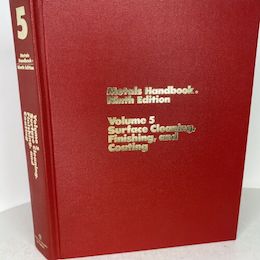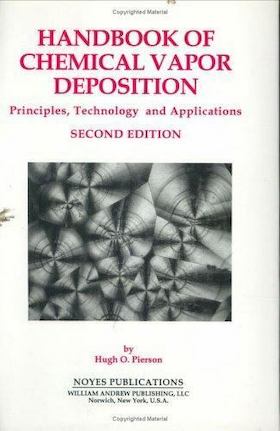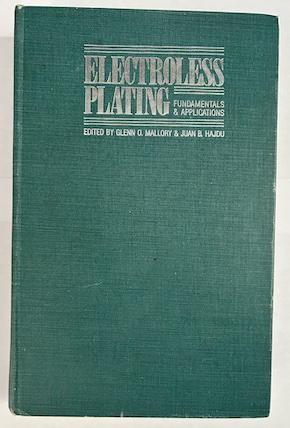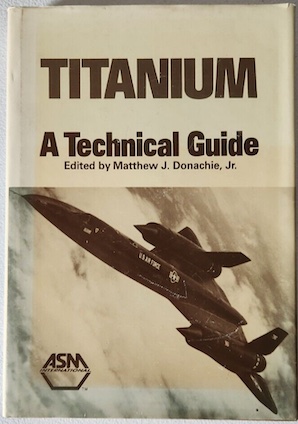
-----
Adhesion of plating on titanium
(to provide context, hopefully helping readers more quickly understand the Q&A's)
In most applications it is vital that layers of electroplating adhere very well to the substrate that they are plated onto. This requires that the substrate be clean and 'active' (free of oxides and other non-metals).
Activating some substrates like steel, zinc, brass and copper usually requires only an acid dip, but other substrates including aluminum, stainless steel, and titanium require more involved activation processes. For titanium, read on ...
Q. Respected sir,
We want a solution for making/forming gold plating directly on titanium material without any copper or nickel coating or any other type of coating.
Thanking you, yours faithfully
- Mumbai, India
October 12, 2021
A. Hi Kunal. We appended your question to a thread about the subject, and it would seem that a PVD application of a gold strike rather than electroplating would be a better way to start, perhaps followed up by electroplating depending on other factors (it's difficult to provide advice until you offer details of your own situation. Thanks!
Luck & Regards,

Ted Mooney, P.E. RET
Striving to live Aloha
finishing.com - Pine Beach, New Jersey
Ted is available for instant help
or longer-term assistance.
October 2021
Q. I think that old US patent US3891447A (https://patents.google.com/patent/US3891447A/en) can be helpful - Hope it helps and good luck!
Goran Budija- Cerovski vrh Croatia
December 10, 2021
⇩ Related postings, oldest first ⇩
Q. We are attempting to plate Nickel (either electroless or electrolytic) on to Ti 6Al 4V alloy but adhesion is poor.
Advice on precleaning/activation or literature sources on this issue would be appreciated.
Chris Brown- Cambridge UK
2001
A. Hi Chris.
I have one new method to get a very good adhesion between nickel and Titanium. This pretreatment method has given us an adhesion who was better than what literature said. I have developed one method for plating on titanium and next step is to get a number of how good adhesion we have. I know one book by Lowenheim [on AbeBooks, eBay, or Amazon affil links] , 4th edition. where he described plating on Titanium.
Best regards,

Anders Sundman
4th Generation Surface Engineering
Consultant - Arvika,
Sweden
2001
Multiple threads merged: please forgive chronology errors and repetition 🙂
Q. I need to electroplate silver onto grade 2 titanium and have pickled the titanium in 1% HF acid but am still getting poor adhesion.
Andrew HuntWales, UK
2006
2006
9th Edition, Vol. 5
"Surface Cleaning, Finishing & Coating"

on eBay or Amazon
or AbeBooks
(affil link)
A. Getting good adhesion on titanium is very difficult and usually involves more than a one-step pickling process. ASM Metals Handbook Vol. 5, Surface Engineering, has a good chapter on preparation of titanium for plating. There is also a procedure to nickel plate the titanium and then bake it for diffusion, ASTM B481, which may be applicable to your needs.

Ted Mooney, P.E.
Striving to live Aloha
finishing.com - Pine Beach, New Jersey
Ted is available for instant help
or longer-term assistance.
2006
A. Hi Andrew.
Try to blast the area before pretreatment steps. Rinse the part in a citric acid
⇦ on
eBay
or
Amazon [affil link] before HF pickling.

Anders Sundman
4th Generation Surface Engineering
Consultant - Arvika,
Sweden
A. The Nickel Plate and diffusion bake is the way to go but try wet blasting the part first with a 1000 mesh novaculite, pickle in hydrochloric acid and a rochelle salt ⇦ on eBay or Amazon [affil link] dip before plating with ELECTROLESS nickel. This is a proven method.

Tim Hamlett, CEF
- West Palm Beach, Florida, USA
2006
A. Long time ago, one of our workers inadvertently overheated a section of the electric immersion titanium heater of our electroless nickel bath due to insufficient level. The heater had been picking up a lot of EN plate for several shifts (over 20 mils) due to lack of time to strip it. The EN plate practically welded to the Ti heater and proved impossible to scrape off on that section. No need to say there was no activation or special procedures to improve adhesion. Only a short time at about 500 °C.
Guillermo Marrufo- Monterrey, NL Mexico
2006
![]() Hi thanks all
Hi thanks all
The titanium parts are laser mirrors and nickel is a bit of a problem, I am going to try a gold strike next. I knocked up a silver strike; this did help a bit.
The mirrors are highly polished titanium and the optical face needs to be silver or gold, and in the UK technical plating is disappearing unfortunately.
Wales U.K.
2006
by Donald Mattox

on eBay or Amazon
or AbeBooks
(affil link)
A. Forget electroplating. Titanium is a difficult substrate. I suggest that you talk to your local university. Find the guy with the electron microscope and buy him/her a pint. They will have a simple vacuum evaporation or sputtering set up which could be just what you are looking for if you only need a thin coating. (Call it PVD and they will be impressed) Physical vapour deposition.
Good luck

Geoff Smith
Hampshire, England
A. Years ago, I experimented on Gold Plating onto Titanium Bangle Bracelets. I end up making my own gold strike out of gold Hydroxide and Hydrofluoric acid. After HF etch, DO NOT Water rinse, Go live into the HF-Gold Strike until completely covered, Now you can plate whatever you want.
We never went into full production with this procedure, because we went into PVD (Magnetron Sputtering).
Sputtering directly onto Titanium substrate with gold, titanium Nitride, titanium carbonitide or other metal, adhesion was not an issue.
Good Luck.
- Mays Landing, New Jersey, USA
2006
Multiple threads merged: please forgive chronology errors and repetition 🙂
Immersion plate gold on titanium?
Q. Is there a standard way to plate immersion gold onto titanium? any help would be very useful. Thank you.
Brian GreenStudent - Seattle, Washington
March 13, 2008
A. It is difficult to activate titanium for plating, Brian. To my knowledge it cannot be plated with immersion gold. Please explain what you are trying to do.

Ted Mooney, P.E.
Striving to live Aloha
finishing.com - Pine Beach, New Jersey
Ted is available for instant help
or longer-term assistance.
March 13, 2008
Q. I am working with Brian and can explain this in more detail. The titanium is actually titanium microspheres. The goal is to get something like gold spheres that are as hard as titanium. Adhesion may not be a problem as long as the gold totally encloses the titanium. Sputtering is not an option here because of the particle nature.
Jon Pry- Seattle, WA USA
June 4, 2008
June , 2008
A. Hi, Jon. See if your library has Vol. 5 of the ASM Metals Handbook. It has a good chapter on preparing titanium and refractory metals for plating. If the solid metal is difficult to plate, microspheres will be more difficult, but the lack of an adhesion requirement should help make it easier. When you read of reagents to try, please remember that reactions which are slow with solid metal may be violently or even explosively rapid with powder because of the huge surface area. Good luck.
Regards,

Ted Mooney, P.E.
Striving to live Aloha
finishing.com - Pine Beach, New Jersey
Ted is available for instant help
or longer-term assistance.
Multiple threads merged: please forgive chronology errors and repetition 🙂
Conductive Plating Interior of Titanium Waveguide
Q. I am trying to plate the interior of a titanium (Ti6Al4V) waveguide with an electrically conductive plating. Our vendors are currently trying to electroplate silver over nickel without much success. Plating thickness/consistency and adhesion are the main issues. The waveguide opening is .28" x .14" and is approx. 3" long with a 45 degree bend in the middle. The minimum plating thickness required is between .0005" and .0015" based on conductivity, thicker coatings are acceptable, provided there is thickness consistency. I have found some information on electroless nickel with 1-2% boron as a potentially electrically conductive plating, but the information on conductivity is very inconsistent. I am looking for a conductivity similar to aluminum. Is there a process developed that would give me the conductivity I need? Is there another, non EN-Boron, plating that would give me the end result I need?
Paul SantosMech Eng - Metheun, Massachusetts
June 7, 2010
A. Plating a wave guide is very difficult without using electroless solutions.
Only copper, gold and silver are the equal of aluminum for conductivity. Copper corrodes so that is out. En of any type followed by a coat of electroless gold is probably your best shot. There may be an electroless silver, but I have not heard of it.
Titanium is a difficult metal to activate and plate. It takes a good shop that is experienced (and good) or a really sharp plating manager/chemist.
- Navarre, Florida
June 9, 2010
Q. How to get good adhesion deposit on the titanium substrate? If you have pretreatment methods please share with me
Karthick SudhanEngineer - Chennai, TN, India
August 3, 2010
August 3, 2010
A. Hi, Karthick
As noted, getting good adhesion onto titanium is not easy. One method is to nickel plate and then bake to diffuse the nickel into the titanium. If you search the site for "plating onto titanium" you will see a good number of threads where different ideas are advanced. ASM Metals Handbook Volume 5 has a whole chapter of methods for adhesion onto titanium and refractory metals. Good luck.
Regards,

Ted Mooney, P.E.
Striving to live Aloha
finishing.com - Pine Beach, New Jersey
Ted is available for instant help
or longer-term assistance.
Q. I would like to electroplate gold onto titanium for a biological application. Is there any way to do this without first plating with copper or another metal?
John WironenNovember 29, 2011
A. Hi, John.
We appended your inquiry onto a previous thread which suggests that sputtering rather than electroplating is the better way to put gold directly onto titanium.
Regards,

Ted Mooney, P.E.
Striving to live Aloha
finishing.com - Pine Beach, New Jersey
Ted is available for instant help
or longer-term assistance.
November 30, 2011
Q. Hi,
I am trying to coat titanium with gold in order to provide a suitable material for low temperature brazing. I have tried using PVD, however the gold layer seemed to pull off the titanium surface and into the braze. All attempts failed instantly. Although electroplating would be more difficult, am I likely to get a stronger bond? Are there any tricks to getting better adhesion in the PVD samples?
Cheers,
Chris
- Sydney, NSW, Australia
October 17, 2012
A. Hi Chris. Hopefully a PVD applicator will share those tips.
In addition to the tips for plating onto titanium that are shown above, please also see letter 13456 -- an informative and engaging dialog on the subject. Good luck.
Regards,

Ted Mooney, P.E.
Striving to live Aloha
finishing.com - Pine Beach, New Jersey
Ted is available for instant help
or longer-term assistance.
October 18, 2012
A. It depends on the materials you are brazing, the temperature and environment. During brazing process material from the mating parts diffuse into each other and form alloys. In some cases brazing is done in an inert atmosphere or vacuum to avoid oxidation. In this case it is possible that gold is diffusing readily into the mating part rather than titanium. The latter may not be diffusing at all. At high temperatures Ti reacts readily with many metals. One can use Ti coating for (vacuum) brazing ceramics, graphite, etc., in which case it helps in wetting the surfaces with filler material.
H.R. Prabhakara - ConsultantBangalore Plasmatek - Bangalore Karnataka India
October 19, 2012
April 19, 2017
A. Sputtering or evaporating gold onto anything is usually started with a thin layer of titanium or chrome to adhere the gold ... otherwise you get the peeling that you described.
Jay VincentOSU - Columbus Ohio USA
Q, A, or Comment on THIS thread -or- Start a NEW Thread

